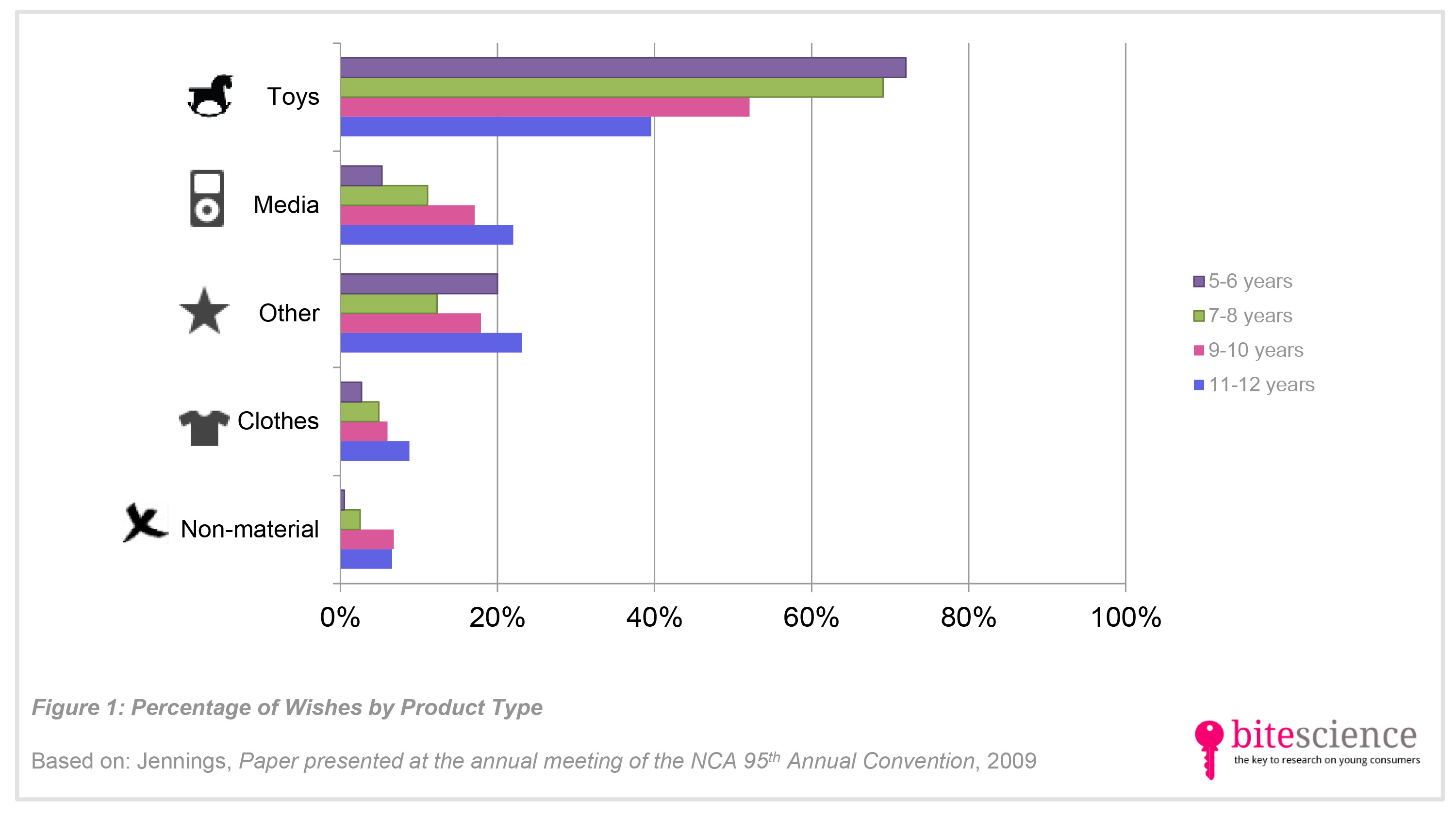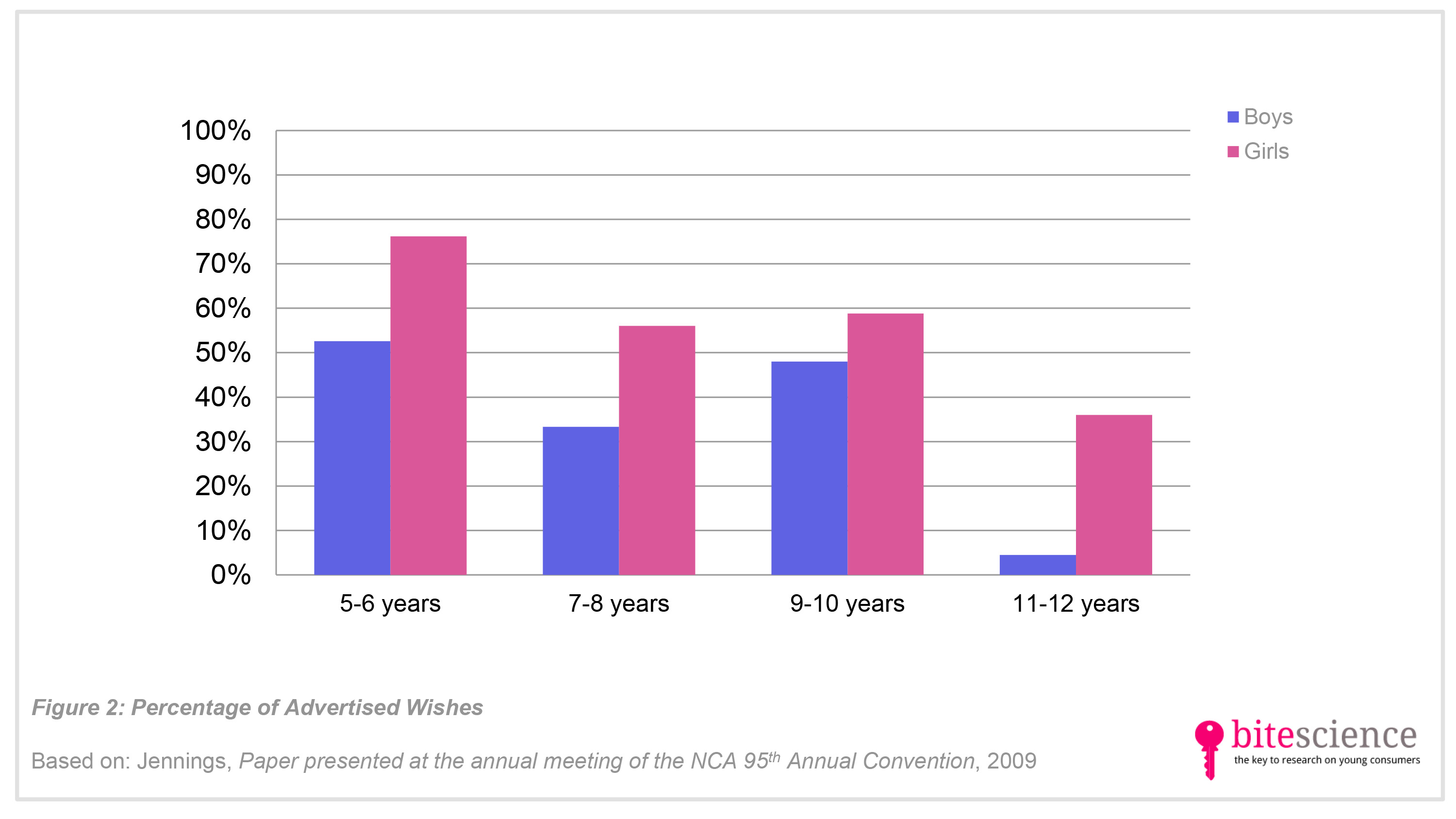
Younger Kids And Girls More Likely to Ask For Advertised Toys on Their Christmas Wish Lists
In 2009, researcher Nancy Jennings investigated how successful December advertising was in influencing children’s Christmas wishes. The study, presented at the meeting of the 2009 convention of the National Communication Association revealed that results are not that different from previous European results. One out of two 5- to 12-year olds asked for at least one advertised or branded item on their Christmas wish list. Results show there are sex and age differences as well.
Take aways
- Christmas commercials are a source of inspiration for children’s wish lists; almost half of the children ask for at least one advertised item.
- Children who favor watching commercial channels ask for more advertised toys on their Christmas wish list than those who watch non-commercial channels.
- Younger children and girls ask for more advertised toys than older children and boys.
- Gender-typical toys prevail on children’s wish lists.
Study information
The question?
What is the influence of television viewing and advertising on children’s (5- to 12-year olds) wishes for Christmas?
Who?
194 5- to 12-year olds from a public school and a private Montessori school, both in Cincinnati, Ohio (age ranges: 5-6 (20,8%), 7-8 (24,0%), 9-10 (30,7%), and 11-12 (24,5%); 88 boys and 106 girls)
Where?
Cincinnati, Ohio, United States
How?
A survey was conducted of children’s wishes for Christmas and their viewing habits (i.e., how frequently (all the time, often, sometimes, almost never, and never) they watched specific channels on school days, and on Saturday mornings). Parents completed the survey for children under the age of 6. Also a content analysis of the commercials in Saturday morning children’s programs was made in the build up to the Christmas holidays (between the Saturday after Thanksgiving and the Saturday prior to Christmas). With these analysis from children’s programs on Disney, Nickelodeon, Cartoon Network, ABC, NBC, CBS, Fox, and WB, the researchers were able to make a comparison between children’s wishes and the products or brands advertised.
Facts and findings
- Children who frequently watch commercial television channels, like Nickelodeon and Cartoon Network, asked for more advertised toys than those who primarily watch non-commercial channels.
- About half of the children asked for at least one item that was advertised for in the commercials on the Saturday mornings in the build up to Christmas.
- Older children asked for less advertised products than the younger kids, but they asked for more media products (e.g., iPods, laptops, etc.), see Figure 1.
- Girls asked for more advertised products than boys, see Figure 2.
- Girls were more likely to ask for girl stuff (e.g., dolls, kitchen sets), whereas boys were more likely to ask for boy stuff (e.g., video games and consoles, action figures).
- Fun fact: Some children made non-material wishes, such as spend more time with family and world peace.

